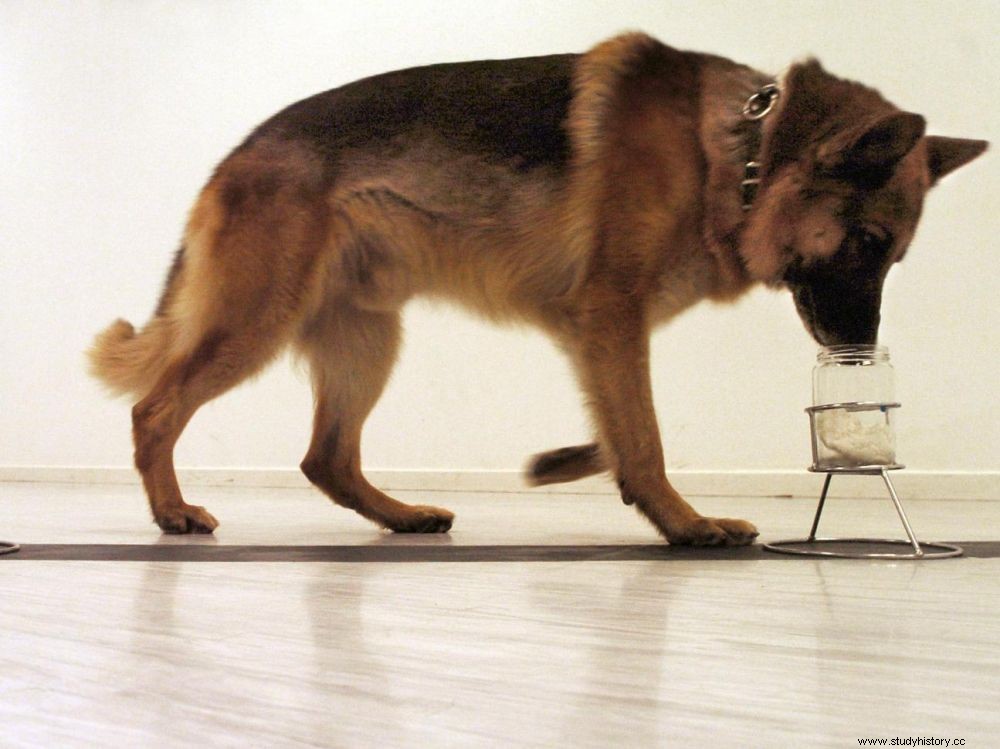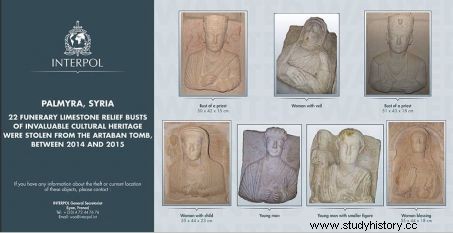In the United States, researchers are going to try a new experiment:train dogs to sniff out looted antiquities.

Training of a German shepherd in the identification of odors, at the Central Service for Forensic Identification in Ecully (France).
After the search for narcotics, explosives or buried people, detection dogs will be put to work in the difficult spinning... of looted art objects! For the first time, sleuths will be specially trained to identify the smell of antiquities from the Middle East and smuggled into the United States. The experiment will be conducted by experts from the Penn Museum in Philadelphia (USA), who came up with this innovative idea, as reported by the American newspaper The Daily Pennsylvanian , January 8, 2018. The stakes are high. Specialists estimate between 4.5 and 6 billion dollars the amount of the world market for the trafficking of stolen objects, also qualified as "blood antiquities ", because raging in conflict areas such as Syria and Iraq.
How to distinguish the presence of Babylonian clay tablets covered with cuneiform texts, thousand-year-old ceramics or terracotta and sculptures from illegal archaeological excavations, or even unique pieces such as the busts from the tomb of Artaban of Palmyra stolen in 2014 and 2015 at the Raqqa Museum, Syria ? This challenge was taken up by the Penn Vet Working Dog Center (WDC) - under School of Veterinary Medicine (Veterinary School) of Penn University -, associated with Red Arch Culture Heritage Law &Policy Research , a non-profit organization dedicated to the protection of cultural property. Through a program called "K-9 Artifacts Finders".
 Some funerary stelae from the tomb of Artaban (Palmyra), looted from the Raqqa museum, between 2014 and 2015. © Interpol
Some funerary stelae from the tomb of Artaban (Palmyra), looted from the Raqqa museum, between 2014 and 2015. © Interpol
Dogs should thus learn to sniff the fragrance of old stones... after the recent one of ivory, or, as a Weimar puppy already does at the Boston museum (United States), to identify those of insects and pests likely to damage works of art! To do this, the animals will be trained using antiques taken from the impressive collections of the Penn Museum. According to Cynthia Otto, director of the WDC, the first four dogs – a priori Labradors and German shepherds – should begin this preparation soon. As there is no question of putting the objects of the prestigious museum at risk, they will be locked in airtight bags with cotton balls that will soak up their smell. They are the ones who will be subjected to the scent of dogs trained to carry out their investigations in the game mode, with a reward for each object identified. If the results are up to expectations, other dogs could be trained. Subsequently, US Customs officials could use the methods developed for the WDC to train their own dogs.
